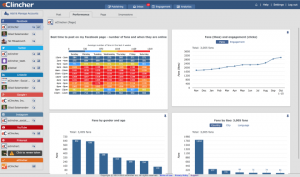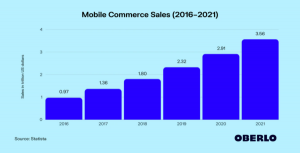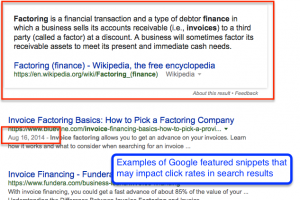
It’s touted that advertisers waste $ 6 billion per year in ad spending due to fraudulent advertising practices. With such a highly replicable business model, this unscrupulous activity carries a high profit margin, with no legal ramifications for the fraudsters’ actions. In fact, if they’re caught, they simply modify their practices and target new websites, until they’re found again.
It’s a win-win business model for fraud creators: create ad fraud, get paid, get caught, pivot, start over.
In this three-part series, we’ll look at who commits fraud, where we find examples of the fraud committed, and detailed examples of the fraud seen in online spaces.
Who Commits Online Advertising Fraud?
It’s easy to jump to the conclusion that thieves are the only ones committing fraud. But that’s far from the reality. Every day, innocent consumers unknowingly commit several forms of online fraud. Perhaps you’re a fraudster, too. Before jumping to too many conclusions, let’s look at some of the more infamous fraudsters:
1. Click Farms
Check your followers on Twitter. I can nearly guarantee you that you have at least one follower with a profile similar to this one:

Click farms have become a lucrative business for third-world areas. Dhaka, Bangladesh, a city of 7 million in Southeast Asia, is touted as the international hub for click farms. These click farms employ hordes of underpaid workers armed with active social media profiles. Since these are real people, it’s very hard to identify them without looking closely into their activity.
For brands, these followers and ‘likes’ are not worth the bump in social presence. Click farm workers have no intention of converting. Even worse, some click farms are paid to commit click fraud, and are clicking on your pay per click ads to drain your budget, for the benefit of your competitors.
While the latter form of click farm is easier to catch (same I.P. address routinely hitting the same ad will get flagged), it still is a modern day inconvenience for brands.
2. Traffic Brokers
Could an ad network be considered a traffic broker? Technically speaking, sure. Many advertising networks have a host of publishers providing traffic, and advertisers who want a piece of that traffic. As a result, ad networks could be seen as the broker between publishers and advertisers.
This practice is normal, and acceptable, and many reputable networks have entire business models built around this (ahem Google AdWords). But as with all good things, there are bad apples in every bunch. Some traffic brokers knowingly purchase traffic generated by a bot farm, and then sell it to unsuspecting advertisers and publishers. For advertisers, if they’re not protected by a third-party traffic scoring solution, they may be throwing away valuable advertising dollars.
For publishers, this is where knowing your feeds comes in handy. If a publisher unknowingly purchases bad traffic from a traffic broker, and passes that dirty traffic along to an advertiser that monitors traffic quality, they’d be stuck with both an angry advertiser and the bill of fraudulent clicks.
When publishers know their feeds and exactly where the traffic has originated, they’re more likely to pass along desirable traffic, which is better for both the advertiser and publisher.
3. Internet Bots
There are two types of Internet Bots: the good ones and the bad ones. An example of a good bot is a search engine spider. These bots crawl the Web, looking for new sites and changes to pages, indexing these sites within search engines. These bots are the reason your search for ‘pumpkin spice lattes” tells you where to purchase your favorite favorite fall treat, how to make it at home, and of course when it will be available in stores.

Bad bots do quite the opposite of the good bots. These bots are usually part of a botnet (more on that in a moment), which performs illegal or questionable activity. Some examples include:
- Infecting a user’s computer with the purpose of running malware.
- Scraping content from a site.
- Manipulating the content or comments on a site.
- Skewing surveys or responses.
- Taking over a company email server.
Once your computer becomes infected, you become part of a botnet.
4. Botnets
Botnets, or groups of bad bot-infected computers, form a network of infected zombie-computers that are controlled by cybercriminals looking to carry out illegal plans on your behalf. Some issues that botnets cause include:
- Mass delivery of spam email. You’ve likely had this happen to you, or have seen it happen to one of your friends. You get an email from one of your contacts, pitching a weight loss pill that will “change your life.” Once you click, you realize you’ve been spammed.
- Collection of private information. Botnets collect information such as usernames, passwords, birth dates, bank information, and more. With access to the most exclusive level of personal data about users, this information can be used to perpetrate identity theft. Worse yet, your information may be sold to the highest bidder.
- DoS and DDoS attacks. A group of infected computers can be controlled to simultaneously visit an unsuspecting website or legitimate business. This results in higher-than-normal volumes of traffic hitting the site, often shutting down a site for its real users.
As part of a botnet, you’re bound to get caught up in fraudulent activity. The actual fraudster has commandeered your computer to complete actions like those previously mentioned, so you too may be a fraudster, without even knowing it.
5. Fraudulent Affiliates
First and foremost, understand that affiliate marketing is a robust industry filled with plenty of legitimate marketers. But with any paid attribution model, there are cheaters within the system, too.
In many circumstances, affiliates make a set commission for each lead they generate on behalf of the advertiser or brand. Fraudsters recognize it’s easier to copy them versus trying to join them, creeping on unsuspecting affiliate marketers and clients alike. Some examples include:
- Domain Squatting or Cybersquatting. This practice feeds off popular brand names, or even the misspellings of common websites, to lure the customer into thinking they’re on that brand’s website. Take for example the popular clothing retailer, The Gap, who filed a lawsuit against the website thegap.com (now defunct). Turns out thegap.com was illegally using The Gap’s trademark to trick users into giving up their personal information.
- Copying a Genuine Affiliate Site’s Content. Some affiliate sites are built very well and are well-trusted within the online community. For example, Pickmyshaver.com is an Amazon Affiliate which started earning money in November 2013, and recently sold for $ 61,000. Fraudsters look to copy successful sites like this, scraping the content and replacing the affiliate ID’s with their own. Pickmyshaver.com customers may not notice that a new URL, Pickmyshavers.com, replaced their beloved site.

- Spammers. Take a look at your personal email. How much of it is spam? Quite a bit, huh? Look closer. How many of those spam messages actually allow you to purchase a product or service? Not only are reputable businesses deprived of the purchase, but there are still unsuspecting people that are fooled by these emails, perpetuating the fraud.
- Generating Fake Clicks or Click Fraud. Potentially the most lucrative form of fraud, click fraud drains funds from a brand by repeatedly clicking on their paid search ads. In doing so, fraudsters are looking to inflate their own affiliate income, or hurt a competing affiliate’s campaign. Either way, both aspects are a dangerous reality associated with affiliate fraud.
How Can You Stop Online Advertising Fraud?
If you’re able to stop online advertising fraud completely, the entire online advertising industry collectively thanks you. But if you’re like the rest of us trying to mitigate this issue, there are some things you can do to protect yourself:
- Have a Reasonable Cost per Click. Remember the adage “you get what you pay for”? Well, it’s true. If you’re demanding a low CPC, there’s a bigger chance that you’re going to get low traffic quality. While there’s still good traffic available on a lesser CPC, you can’t expect filet mignon on a Burger King budget.
- Use Quality, Relevant Keywords. Spend your money where it makes sense, and not where it doesn’t. If you sell handbags, bid on the types of handbags you sell (e.g. clutches, crossbodies, or totes) but not on the long-tail keywords you don’t have (e.g. Coach or Burberry).
- Review Your Ad Quality. Does your copy call out the most important aspects of your offer? If your competitors are also offering “Free Shipping,” what differentiates you from the competition? Try to make your ad stand out above theirs.
- Have a Great Call to Action. Colorful and actionable CTA’s can make or break your copy. Poor use of CTA’s can make you look unengaged and really quite spammy.
Online advertising fraud isn’t going away anytime soon, but collectively we can do our best to mitigate the damages from it while working on a collective and cohesive solution.
Digital & Social Articles on Business 2 Community
(199)








